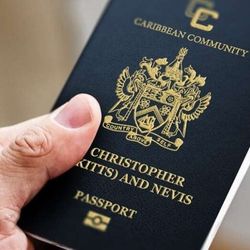Last week, the Federation of St Kitts and Nevis began rolling out its mass vaccine programme after receiving 20,000 vaccinations from India.
Despite its international borders opening on October 31st, St Kitts and Nevis continues to be one of the least impacted by the COVID-19 pandemic, reporting only 33 cases, no current community spread and zero deaths overall.
Prime Minister Timothy Harris has called for all citizens of the dual-island nation to be vaccinated to achieve herd immunity.
Additionally, Prime Minister Harris addressed the importance of vaccine sharing globally, asking wealthier nations to assist developing countries.
He addressed the need for greater access to the vaccine and for it to be distributed in an efficient means.
“I call on the G7 countries of Canada, France, Germany, Italy, Japan, the UK and the US, as well as the EU to make vaccines available to those nations in need in a timely manner,” PM Harris said.
“We are grateful for the generous amounts being contributed by these nations to the COVAX vaccine fund but urge them to go further and faster, as the indicative quantities do not meet the threshold of herd immunity,” he added.
The Prime Minister also thanked India for its generosity. The two nations have enjoyed a close relationship due to their standing in the Commonwealth and shared history as British colonies.
Additionally, St Kitts and Nevis is home to a sizeable Indian population, from businessmen to students, which only continues to grow thanks to the nation’s Citizenship by Investment Programme.
What is Herd Immunity
With the rising number of cases of COVID-19 around the world, health officials continue to work to find the best way to protect the public from the disease.
You may have heard health officials mention herd immunity as a possible way to contain the spread of COVID-19.
Herd immunity, or community immunity, is when a large part of the population of an area is immune to a specific disease.
If enough people are resistant to the cause of a disease, such as a virus or bacteria, it has nowhere to go.
While not every single individual may be immune, the group as a whole has protection. This is because there are fewer high-risk people overall. The infection rates drop, and the disease peters out.
Herd immunity protects at-risk populations. These include babies and those whose immune systems are weak and can’t get resistance on their own.
How do you achieve Herd Immunity?
There are two ways this can happen.
You can develop resistance naturally. When your body is exposed to a virus or bacteria, it makes antibodies to fight off the infection.
When you recover, your body keeps these antibodies. Your body will defend against another infection. This is what stopped the Zika virus outbreak in Brazil.
Two years after the outbreak began, 63% of the population had had exposure to the virus. Researchers think the community reached the right level for herd immunity.
Vaccines can also build resistance. They make your body think a virus or bacteria has infected it. You don’t get sick, but your immune system still makes protective antibodies.
The next time your body meets that bacteria or virus, it’s ready to fight it off. This is what stopped polio in the United States.
When does a community reach Herd Immunity?
It depends on the reproduction number, or R0. The R0 tells you the average number of people that a single person with the virus can infect if those people aren’t already immune.
The higher the R0, the more people need to be resistant to reach herd immunity.
Researchers think that the R0 for COVID-19 is between 2 and 3. This means that one person can infect two to three other people.
It also means 50% to 67% of the population would need to be resistant before herd immunity kicks in and the infection rates start to go down.
What are the challenges to developing Herd Immunity to COVID-19?
The main obstacle to herd immunity to COVID-19 right now is that the virus that causes the disease is “novel,” or new.
That means that it hasn’t infected humans before and everyone is at risk of infection. There’s no existing immunity to build on.
Another potential barrier is that we don’t know how strong the immune protection is or how long it will last in people who’ve had COVID-19.
Early research on monkeys showed that they made antibodies to the virus that protected them from a second infection a month later.
If the coronavirus is like the flu, we can expect a few months of protection.

